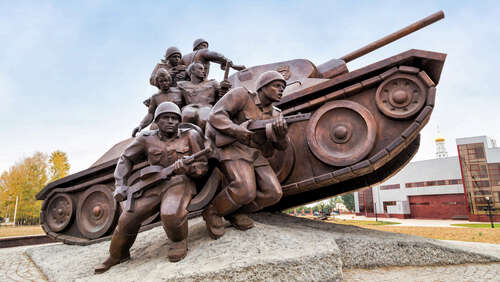
Kutuzov was the name given to the Soviet counteroffensive after the breakdown of Operation Citadel, as the defenders sought to take advantage of the weakened German forces. Named after the Russian General who repelled Napoleon’s armies in 1812, this had been the Red Army’s scheme all along. Now was Stalin’s time to retaliate, and what followed was the bloodiest chapter in what was already a desperately violent battle.
Three Soviet army groups prepared to push towards the town of Orel, which lay in the northern part of the salient. It aimed to advance southwest and trap the German Ninth Army. Generals Model and von Kluge received intelligence of the Soviet forces amassing to the north, which numbered almost 1.3 million soldiers, 2,400 tanks, 3,000 aircraft, and over 26,000 artillery pieces. It would have been a daunting prospect as they readied their already weary troops for combat once again.
The Germans built up their defenses in preparation, which thwarted the Soviet attackers for a time. However, by day three of the counteroffensive, the Red Army threw its full force against the Germans, while behind the lines, Soviet partisans disrupted supplies by disabling railway networks. It wasn’t long before Germany was on the back foot as Russia dominated inside the salient.
By July 26th, two weeks after the start of Operation Kutuzov, the Germans started to retreat. The previously superior Luftwaffe was floundering as the Soviets reclaimed Kharkov (now Kharkiv) in Ukraine. By the time Operation Kutuzov was through, Germany was defeated at the battle of Kursk, and General Zhukov started to push Russia’s occupiers back towards the Black Sea.

